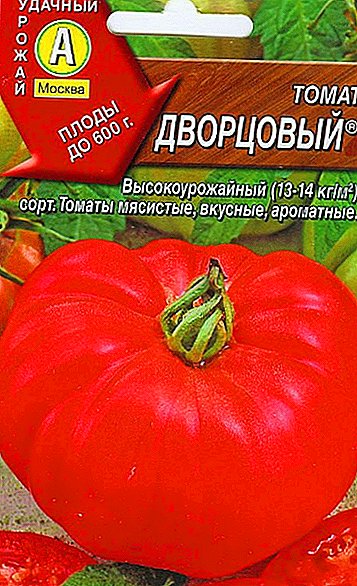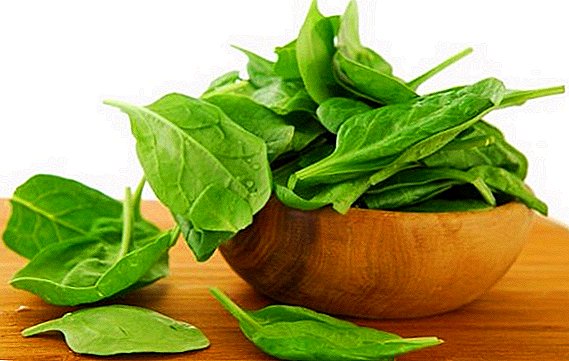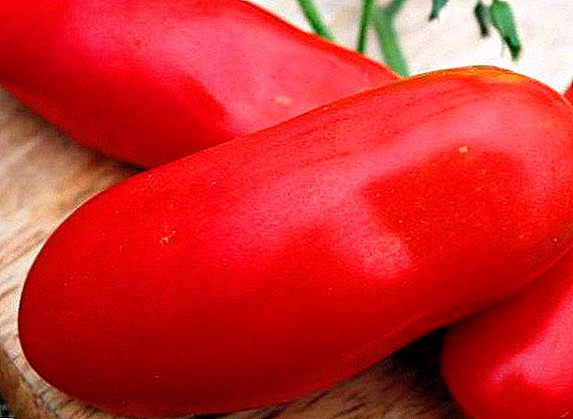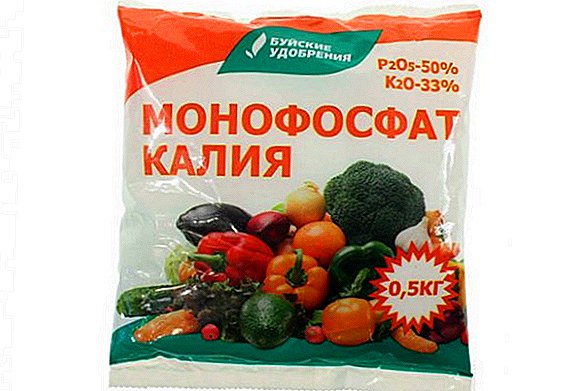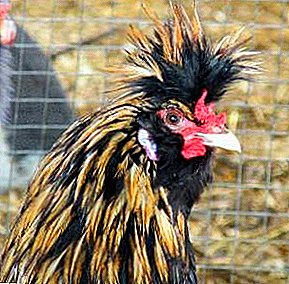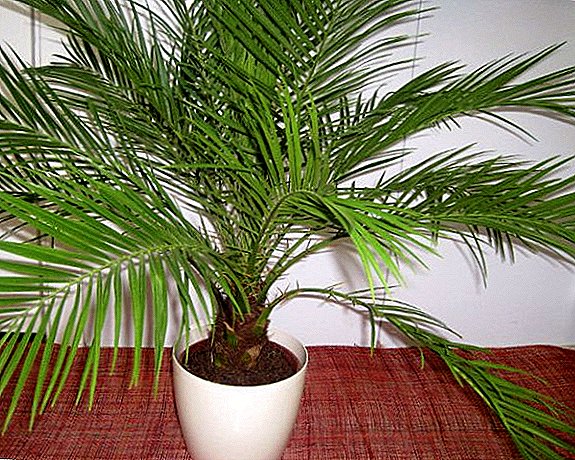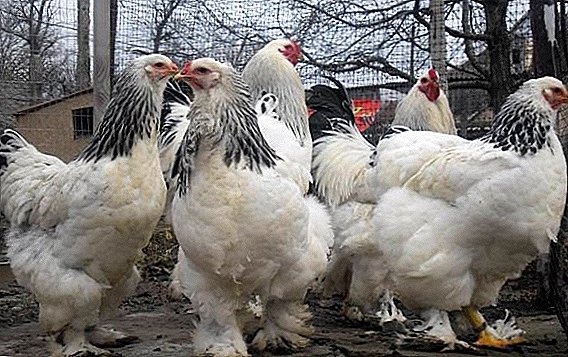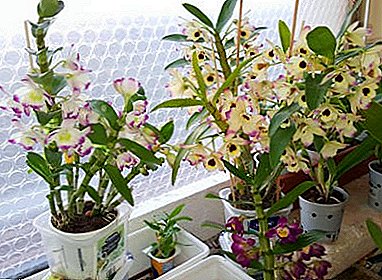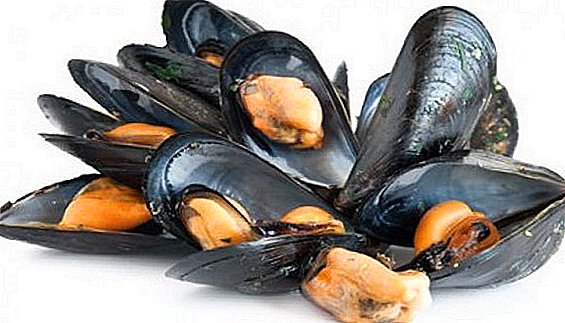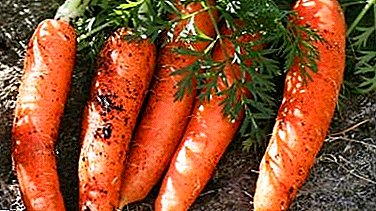
Carrots were once a wild plant, but man has cultivated it for thousands of years. But now it is one of the most popular and useful root vegetables.
Many varieties have been created, but to this day the work of breeders has not stopped. New carrot varieties are being created that will be more resistant to diseases and less susceptible to environmental influences.
One of the most successful achievements of plant scientists is Canada F1 carrots. This article describes in detail the properties and characteristics of the cultivation of this carrot.
Detailed description and description
Appearance
 Carrot Canada F1 has an elongated cone-shaped, soft-rounded fruit tip.
Carrot Canada F1 has an elongated cone-shaped, soft-rounded fruit tip.
The color of the carrot is classic orange, the core has a small diameter, its color is slightly darker than the main flesh. Root grows in length to 20-26 cmand its diameter is up to 5-6 cm. The ground part of the plant consists of a powerful rosette with dark green leaves.
In terms of ripening, it refers to medium-late hybrids, from shoots to full harvest 120-130 days should pass. Selective cleaning starts from July.
Varietal type
According to Rosreestr, this is the flacca type. Root crops of this variety are late ripe, have good keeping quality during storage. Conical shape, reach lengths up to 25 cm, diameter from 3 to 5 cm. It is these signs that Canada F1 carrots also have.
Amount of fructose and beta carotene
The amount of fructose and beta-carotene in carrots is high: sugars 8.2%, possibly higher, since the sweetness of carrots depends on the soil on which it grows.
Also contains:
- trace elements;
- macronutrients;
- vitamins.
Sowing time
Early sowing of carrots in late April. The main crops are carried out in early May, but it is not too late to sow carrots on May 15-20. Carrots are cold-resistant culture, has tight seeds, so the sowing of seeds is carried out as early as possible. Podzimny sowing of carrots is practiced at the end of October, beginning of November.
Seed germination
Seed germination is good, but to speed up the emergence of seedlings, it is recommended to pre-sow seed soaking, especially if sowing is carried out in mid-May.
Average root weight
The average weight of 1 root varies from 150 to 200 grams. Individual fruits can reach a weight of 500 grams.
Productivity from 1 ha
What is the yield from 1 ha: the yield is very high, from 300 to 650 c / ha, which is 2 times higher than the standards for the Artek and Losinoostrovskaya varieties. The adaptability to mechanical digging, transportability, increased productivity, versatility of purpose, good keeping quality - makes this sort of carrot interesting for growing on an industrial scale.
Growing regions
 The State Register of Russia carrots variety Canada F1 recommends for cultivation throughout the countryand this is a very rare recommendation: out of 300 varieties, not more than 20 were awarded.
The State Register of Russia carrots variety Canada F1 recommends for cultivation throughout the countryand this is a very rare recommendation: out of 300 varieties, not more than 20 were awarded.
In any region, on heavy soils, even with the most difficult climatic conditions, you can get a decent harvest.
So Canada F1 carrots will delight gardeners with their rich harvest not only from the Black Soil Region, but also in the Urals and Siberia.
Where is it recommended to land?
Grown carrots in natural conditions, sowing in the groundShe doesn’t need additional shelters, especially greenhouses.
Resistance to diseases and pests
Canada F1 is genetically resistant to tsvetushnosti, as well as to the defeat of the tops of fungal diseases: alternariosis and cercosporosis.
Ripening
Full maturation of carrots occurs in late September, early October. It was then that the need to carry out cleaning of root crops.
What soil prefers?
Carrots Canada F1 can grow on any soil, and at the same time give a good harvest. But still on sandy, black earth, light loamy soils, yields can reach maximum sizes.
Frost resistance
Carrots - cold-resistant plant, Canada F1 is no exception.
History of origin
Carrots "Canada" is a hybrid of the first generation of Dutch breeding, for breeding are used varieties Shantane and Flakke. From Flakke, the hybrid gets its size, good keeping quality, and from Chantane - high content of sugars and trace elements. The variety was introduced into the Russian State Register in 2001.
Appointment and keeping quality
Canada F1 is universal in use: it is fresh, well-preserved without loss of consumer qualities for up to 10 months, is used in processing:
- conservation;
- freezing;
- production of juices and baby food.
Difference from other vegetable varieties
The main difference from most varieties of carrots is the ability to produce yields in difficult growing conditions.
Advantages and disadvantages
 Merits:
Merits:
- high stable yield;
- high content of carotene, sugar and trace elements;
- unpretentiousness to growing conditions;
- excellent presentation;
- great taste and fresh, and after processing;
- good transportability;
- wonderful keeping quality.
Are there any disadvantages? Yes, it is impossible to get your own seeds, as it is a hybrid. And when trying to plant their seeds, the plants will not have signs of carrots Canada F1. Because of this, the seeds will have to be bought annually.
Features
Growing up
- Canada F1 carrots are best planted in early May. The best predecessors - onions, garlic, peas, lettuce.
- Fresh manure for planting is not made, since it causes an excessive growth of tops, while the roots remain small. The best fertilizer is humus, and it should be added under carrots in the fall.
- Sowing is carried out on beds, in grooves about 3 cm deep. Since Canada produces large roots, it is important to carry out sparse sowing, the optimal distance between plants in a row is 10 cm, between rows of 20 cm. More dense sowing is possible twice, then definitely thinning of plants at the age of 1 month.
- If a crust forms on the beds of carrot crops, use a small amount of watering to destroy it.
- When loosening a rake or another tool, you can damage the thin roots of the seedlings - and then the carrot will be branched. For the same reason, thinning is carried out no earlier than 30 days after the emergence of shoots.
- Of the fertilizers, a small amount of nitrogen fertilizer is used during growth, possibly in the form of herbal infusion. Do not forget about the ash - it will give potassium, phosphorus and additionally scare the carrot fly.
- Mandatory weeding from the weeds, loosening the soil. Carrots like frequent small glazes, root crops crack from excess moisture.
Harvesting and Storage
Late-ripe carrots for storage cleaned in mid-October. It is desirable to carry out the cleaning in dry time, while it is important to cut the tops as early as possible, otherwise when drying in the sun through the leaves there will be large losses of moisture. It is best to dry the carrots in the shade, and then folded for storage.
Diseases and pests
 Carrot fly damages almost any carrot, without sorting them out by varieties. To protect against flies, it is necessary to observe crop rotation, use a combined landing.
Carrot fly damages almost any carrot, without sorting them out by varieties. To protect against flies, it is necessary to observe crop rotation, use a combined landing.
Onions can be planted in carrots in any form.: seeds, sevka or even a large onion for receiving seeds.
An onion planted along the edge of a flower bed with carrots will save it from a carrot fly. Canada F1 is resistant to fungal diseases.
Cultivation problems and solutions
Gardeners-gardeners love carrots of this variety for the fact that it does not create additional problems when growing: planting, timely weeding, watering, fertilizer, harvesting - these are the main tasks faced by the vegetable grower when working with Canada F1.
Similar species
Canada F1 recommended for cultivation throughout Russia, and among carrots with the same unpretentiousness to the soil, the following varieties can be noted.
Dutch selection
Yellowstone
Yellowstone - late, with a mass of fruit up to 200 g, with good taste, high yield up to 8.2 kg / sq.m. The raisin of the variety is the yellow color of the roots.
Samson
Samson is middle-ripening, the root mass is up to 150 g, the taste is good, the yield is 5.5-7.6 kg / sq. M, the roots are leveled.
Russian breeding
Tinga
Tinga - root weight 110-120 g., Tastes excellent, yield 5.0-5.5 kg / sq. It has a red flesh color, the heart is orange.
Totem
Totem - root mass 120-145 g., Taste is excellent, yield 5.5-6.0 kg / sq. The raisin of the variety is red.
Combines these varieties endurance, adaptability to different climatic conditions, the ability to maintain marketability during long-term storage, high yield and versatility of the destination.
Canada variety F1 one of the most successful modern varieties of Dutch breeding. He has the full right to settle in your garden beds.


